Evidence of a Devonian fossil forest has been found in the high sandstone cliffs located near Minehead in Devon. Researchers from the University of Cambridge and the University of Cardiff have discovered the oldest fossilised trees ever found in the UK. The fossil remains of the trees, known as Calamophyton represent the oldest known fossil forest on Earth.
Fossilised tree stumps near the town of Gilboa (New York, USA) and a quarry at nearby Cairo, New York are thought to be 380 and 385 million years old respectively. The Gilboa site is dominated by remains of Wattieza trees. These trees are related to the Calamophyton trees identified at the Devon site. They are both members of the Pseudosporochnales Order and are distantly related to modern ferns.
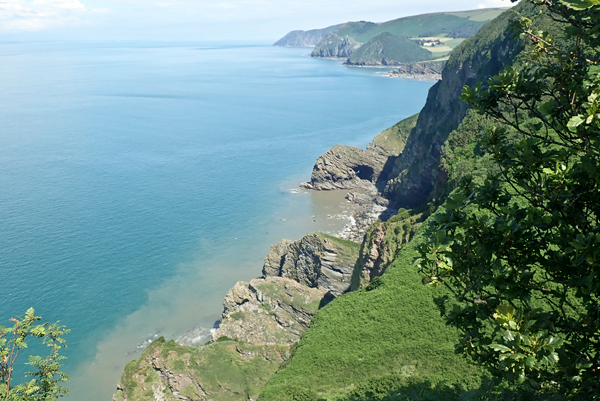
Devonian Fossil Forest
The Devonian fossil forest is thought to be around four million years older than the tree fossils discovered in New York. The forest is approximately 390 million years old (Eifelian faunal stage of the Middle Devonian).
The fossils were found near the town of Minehead. The site is located on the south bank of the Bristol Channel, near a Butlin’s holiday camp. The fossilised trees, known as Calamophyton, at first glance resemble palm trees, but they are not related to modern angiosperms. Rather than solid wood, their trunks were thin and hollow in the centre. They also lacked leaves, and their branches were covered in hundreds of twig-like structures.

Evidence of Arthropods Found
The trees were much shorter than extant trees. The largest specimens were between two and four metres high. As the trees grew, they shed their branches. The floor of the forest was covered in a dense mat of decaying vegetation. This was home to an array of invertebrates and arthropod tracks have been discovered at this site.

A Devonian Ecosystem
It had been thought that these sandstone cliffs were largely devoid of fossils. This remarkable discovery demonstrates how early trees helped to stabilise riverbanks and coastlines hundreds of millions of years ago. It was during the Devonian that the first extensive terrestrial forests formed.
The Devonian lasted between 419 million and 359 million years ago. During this geological period the first complex terrestrial ecosystems evolved. By the end of the Devonian, the first seed-bearing plants (pteridosperms) appeared and the earliest land animals, mostly arthropods, were well-established.
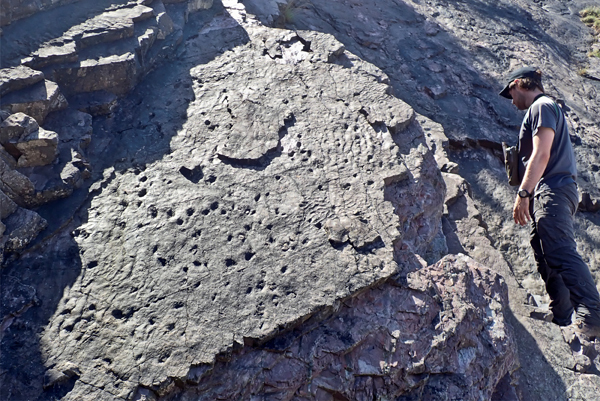
Fundamentally Changing Life on Earth
Commenting on the significance of the fossil forest discovery, one of the paper’s co-authors, Professor Neil Davies (Cambridge University), stated:
“The Devonian period fundamentally changed life on Earth. It also changed how water and land interacted with each other, since trees and other plants helped stabilise sediment through their root systems, but little is known about the very earliest forests.”
The Devonian fossil forest identified by the researchers was found in the Hangman Sandstone Formation, along the north Devon and west Somerset coasts. During the Devonian period, this region was not attached to the rest of England, but instead lay further south, connected to parts of Germany and Belgium, where similar Devonian fossils have been found.
Studying the Ecology of the Earliest Forests on Earth
Co-author Dr Christopher Berry (Cardiff University) commented:
“When I first saw pictures of the tree trunks I immediately knew what they were, based on 30 years of studying this type of tree worldwide. It was amazing to see them so near to home. But the most revealing insight comes from seeing, for the first time, these trees in the positions where they grew. It is our first opportunity to look directly at the ecology of this earliest type of forest, to interpret the environment in which Calamophyton trees were growing, and to evaluate their impact on the sedimentary system.”
During the Devonian, this location was a semi-arid plain, criss-crossed by small river channels spilling out from mountains to the northwest. The fieldwork was undertaken along the highest sea-cliffs in England, some of which are only accessible by boat. The sandstone formation is in fact rich with plant fossil material. The researchers identified fossilised plants and plant debris, fossilised tree logs, traces of roots and sedimentary structures, preserved within the sandstone.
A Weird Forest
Professor Davies explained:
“This was a pretty weird forest – not like any forest you would see today. There wasn’t any undergrowth to speak of and grass hadn’t yet appeared, but there were lots of twigs dropped by these densely-packed trees, which had a big effect on the landscape.”
This was the first time in the history of our planet that large plants could grow together on land. The sheer abundance of debris shed by the Calamophyton trees built up within layers of sediment. The sediment affected the way that the rivers flowed across the landscape, the first time that the course of rivers could be affected in this way.
Professor Davies added:
“The evidence contained in these fossils preserves a key stage in Earth’s development, when rivers started to operate in a fundamentally different way than they had before, becoming the great erosive force they are today. People sometimes think that British rocks have been looked at enough, but this shows that revisiting them can yield important new discoveries.”
Everything Dinosaur acknowledges the assistance of a media release from the University of Cambridge in the compilation of this article.
The scientific paper: “Earth’s earliest forest: fossilized trees and vegetation-induced sedimentary structures from the Middle Devonian (Eifelian) Hangman Sandstone Formation, Somerset and Devon, SW England” by Neil S. Davies, William J. McMahon and Christopher M. Berry published in Journal of the Geological Society.
Visit the award-winning Everything Dinosaur website: Visit Everything Dinosaur.


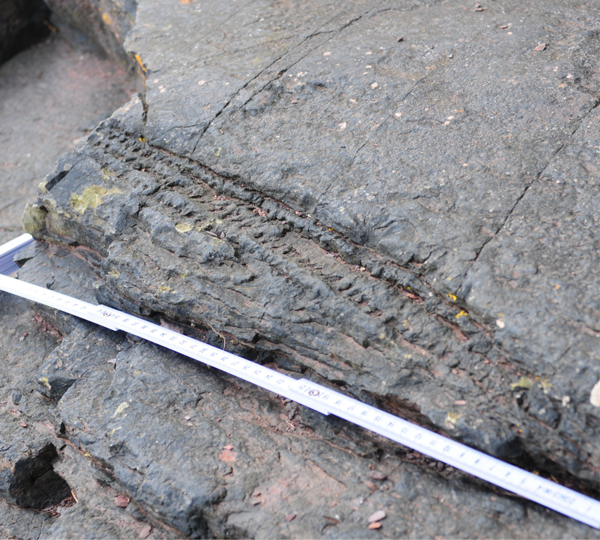
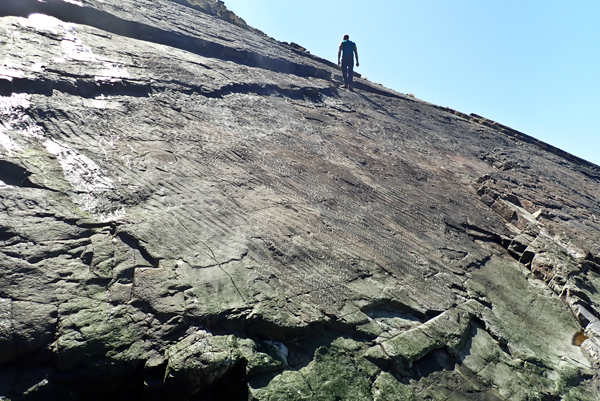

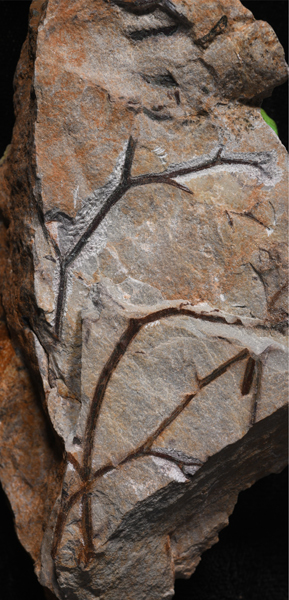




Leave A Comment